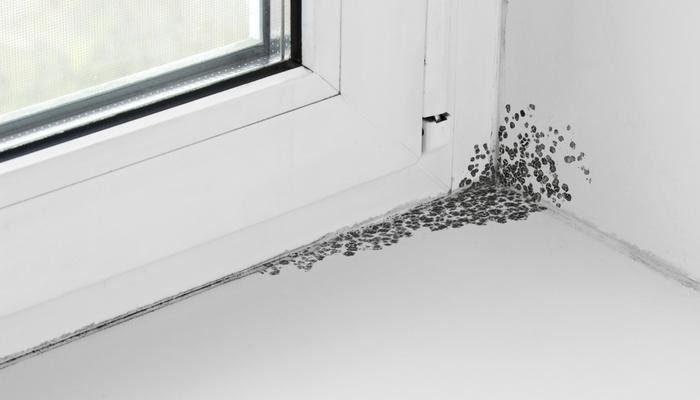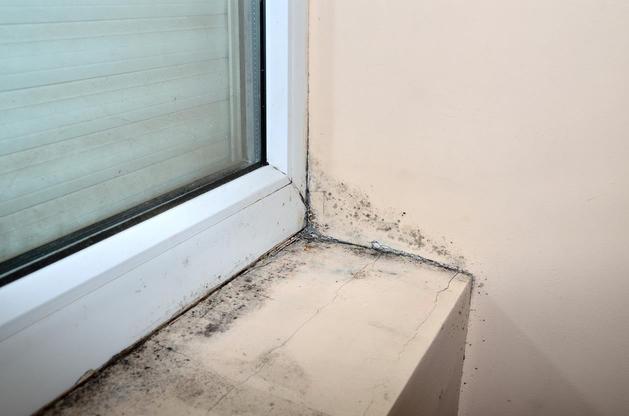Solved! Why There Is Mold on the Window Sill and What to Do About It
It’s not uncommon to find mold on a window sill, but it’s still a problem that needs to be addressed sooner rather than later. Banish unwanted buildup before it becomes a more significant issue.
ByMelissaGraham | Published Aug 6, 2021 3:22 PM
Photo: istockphoto.com
Q: Lately, I’ve noticed mold on my window sills. I wipe it away, but it still keeps coming back. Is this a big deal? What’s the best way to treat this problem?
A: Mold can be more than a household hassle: It can cause damage to a home and pose a health risk to sensitive populations and compromise a home’s air quality. The best way to treat mold on window sills is to eliminate the wet or humid conditions causing the growth. Before tackling this issue, identify whether you’re dealing with mold or mildew, as the two share similarities and should be treated differently. For mold growth, you’ll first need to identify the source of the problem by checking for leaks or condensation in the windows. Specific cleaning products can get rid of small areas of mold growth, but larger areas may require professional help.
Got mold on the window sill?Leave the dirty work to the pros. Get free, no-commitment project estimates from mold removal experts near you. Find a Pro+
Mold grows in moist environments, so check for condensation or leaks in the window frames.
Photo: istockphoto.com
If you spot mold on a window sill, there’s a chance the window is leaking or has condensation buildup. Identifying leaks or condensation can help determine what steps need to be taken next to remove the mold. A joint that meets the glass and the frame on aluminum window frames can often trap condensation, allowing for mold to grow. Check the top, bottom, and sides of the window and look for cracked caulk or sealant that could be letting excess moisture in. Pay special attention to the windows during or after rain, as it will be easier to identify any potential leaks.
Clean the mold or call in a mold expert if it covers a large area.
Mold that grows on window sills can usually be cleaned with a household cleaning product or DIY vinegar solution. However, if the mold in question covers a large area in your home or if you suspect it’s black mold, it may be time to call in an expert. Once moisture and mold spread, it can be hard to contain them. Water mitigation and mold remediation pros can determine how extensive the mold is and suggest appropriate solutions to eradicate the problem.
Got mold on the window sill?Leave the dirty work to the pros. Get free, no-commitment project estimates from mold removal experts near you. Find a Pro+Check the roof and gutters for proper drainage.
Because roofs and gutters help protect the home from water damage, it’s wise to inspect them to make sure they are draining correctly. Leaks in gutters and roofs can lead to mold growth as well as structural issues and damaged insulation. Leaks or other drainage problems will be evident after a storm, so it might be best to check both after any heavy rain or snowfall. If you’ve done a general inspection outdoors, you can also check the attic to determine if any interior leaks are present. If any drainage issues are present, it’s vital to address them as soon as possible—not just to eliminate mold but to ensure the home’s structural security.
Photo: istockphoto.com
Reduce humidity and increase airflow, especially in damp places like the bathroom.
To decrease humidity in a space, increase airflow by using a fan or dehumidifier. These devices can help eliminate moist, humid conditions where mold is most likely to grow. While the breeze from fans circulates air and evaporates excess moisture, dehumidifiers draw out moisture from the air. Since moisture from showers and baths can add to damp conditions, mold is more likely to grow on window sills in bathrooms.
Does your home have a mold problem?Leave the dirty work to the pros. Get free, no-commitment project estimates from mold removal experts near you. Find a Pro+Consider window repair or replacement to ensure the mold doesn’t return.
If a leaky window is the culprit, damaged caulk is often to blame. You can try to recaulk the window yourself, but more complex fixes may require a professional. If the windows are in poor condition or you’ve noticed mold growing in between the window panes, it may be worth it to replace the window altogether. Soft wood, evidence of water damage, and frequent drafts may be signs that window replacement is in the cards. Stronger window frames will insulate a home better, meaning less condensation and less risk of mold. Some window frames are more moisture resistant than others, so check with a window manufacturer or local installer to learn which is best for your home.
Some jobs are better left to the prosGet free, no-commitment estimates from mold removal experts near you. Find local pros+Disclosure: BobVila.com participates in the Amazon Services LLC Associates Program, an affiliate advertising program designed to provide a means for publishers to earn fees by linking to Amazon.com and affiliated sites.
TAGS: MOLD & MILDEW HEALTHY HOME


